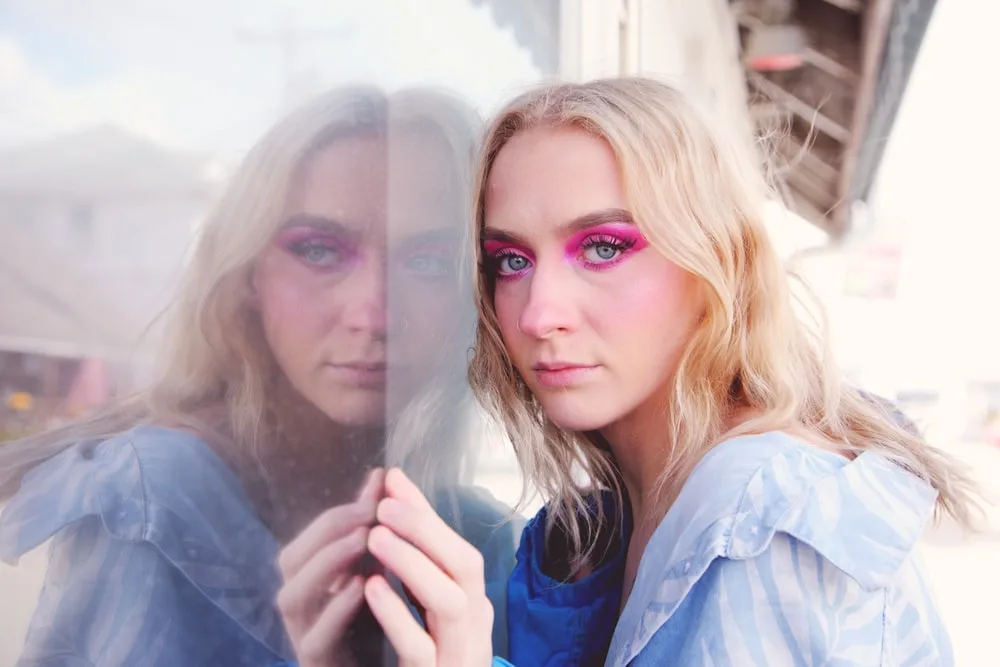Have you ever scrolled through Instagram and suddenly felt like you’re not good enough? Like everyone else has their life together while you’re still figuring out how to fold fitted sheets? I remember sitting in Mrs. Lopez’s 8th-grade class last year, watching a student named Maya nervously hide her B+ math test.
She whispered, “I’ll never be like the kids who get A’s.” That ache between who we are and who we think we should be isn’t just teen drama—it’s one of psychology’s biggest mysteries. The good news? Closing this gap isn’t about becoming perfect. It’s about becoming real, and today I’ll show you exactly how.
Core Concepts Explained: Meet Your Inner Selves

Imagine your mind has two main characters: your Real Self (who you actually are right now) and your Ideal Self (who you dream of becoming). Psychologist Carl Rogers spent decades studying this. He called your overall view of yourself Self-concept—like a mental selfie that includes your Self-image (how you see yourself) and your Actual Self (your current skills and traits).
“We aren’t born with an Ideal Self,” explains Rogers’ research. “It’s built from every ‘should’ we hear—’You should be smarter,’ ‘You should be prettier,’ ‘You should care more about soccer.'”
Think of it like this:
| Self Type | What It Means | Real-Life Example |
|---|---|---|
| Real Self | Your current reality | “I sometimes forget homework and get nervous speaking in class” |
| Ideal Self | Your fantasy version | “I’d be the student who always has perfect grades and never stumbles” |
| Self-image | Your self-perception | “I’m ‘the forgetful one’ in my friend group” |
Why That Gap Hurts (and How It Grows)
When your Real Self and Ideal Self are misaligned, psychologists call this Incongruence. It’s like wearing shoes two sizes too small—you might keep walking, but it hurts. I saw this with my cousin Leo, who’s biracial. His Cultural norms at home celebrated quiet humility, but TikTok stars made him feel he needed to be loud and viral. That confusion spiked his Anxiety and Shame.
Where do these impossible ideals come from? Let’s break it down:
- Societal expectations: Magazines showing “perfect” bodies, coaches demanding “championship focus,” or even family pressure to join the family business
- Social comparison: Checking Snapchat and thinking, “Why isn’t my prom photo as cool as theirs?”
- Cultural norms: In some cultures, the Ideal Self centers family duty; in others, it’s all about individual achievement
- Social media: Curated highlights that make real life feel “less than”
Real Stories: When the Gap Gets Real
Take Aisha, 13, from my neighborhood. Her Real Self loves drawing comics but struggles with math. Her Ideal Self was an “A+ STEM genius” (thanks to parental pressure). For months, she faked sick to avoid tests—Incongruence causing real pain.
Then she tried something radical: she showed her parents her sketchbook full of superhero math teachers. Their laughter broke the tension. Suddenly, her Self-esteem rose because she stopped pretending.
Contrast this with Marco, 14, who:
- Compared himself to gaming streamers (hello, Social comparison!)
- Stayed up until 2 a.m. trying to hit “pro” status
- Felt crushing Shame when he couldn’t
His Mental health nosedived until his coach asked: “What if you played for fun again?” That tiny shift toward Congruence (aligning actions with joy) changed everything.
Your Action Plan: Bridge the Gap in 5 Steps
Ready to close your own gap? These aren’t “think positive” clichés—they’re tools backed by Positive psychology. Try just one this week:
- Self-awareness Check-Ins: Set a phone reminder 3x/day. Ask: “What’s one true thing about me right now?” (Example: “I’m tired but tried my best”). No judgment—just facts.
- Goal setting That Doesn’t Suck: Ditch “I’ll be perfect.” Try: “This week, I’ll ask one question in math class.” Small wins build real confidence.
- Practice Self-compassion: When Maya failed her test, she wrote herself a letter like she was comforting her best friend. This reduces Anxiety by 40% according to Harvard studies.
- Seek Unconditional positive regard: Find your “safe person”—someone who likes you as you are (like Leo’s abuela, who said, “Your quiet heart is my favorite thing”).
- Play the “Why?” Game: If your Ideal Self is “viral dancer,” ask “Why?” 5 times. You might discover it’s really about “feeling included”—which you can do now by joining the school dance crew.
Why This Changes Everything
When your Real Self and Ideal Self align, magic happens. You unlock what Rogers called Congruence—that calm confidence where you stop performing and start living. It’s not about deleting dreams; it’s about building them on Actual Self truths. My student group calls it “the permission to be a work in progress.” And that journey? It directly fuels your Emotional well-being and long-term Personal growth.
Last month, Maya aced a project about imperfect science—the messy experiments that lead to real discovery. Her teacher wrote: “Your curiosity is your superpower.” That’s the shift: from chasing an impossible ideal to nurturing what already makes you, you. You’ve got this. Now go grab a snack, forget those folded fitted sheets, and take one tiny step toward your real, radiant self.

Jean Smith is a fitness enthusiast and blogger who focuses on fitness and a healthy lifestyle. She is passionate about assisting people in living healthier lifestyles and is constantly on the lookout for new and creative methods to stay fit and healthy. Her articles are excellent resources for anyone interested in improving their health and fitness.
